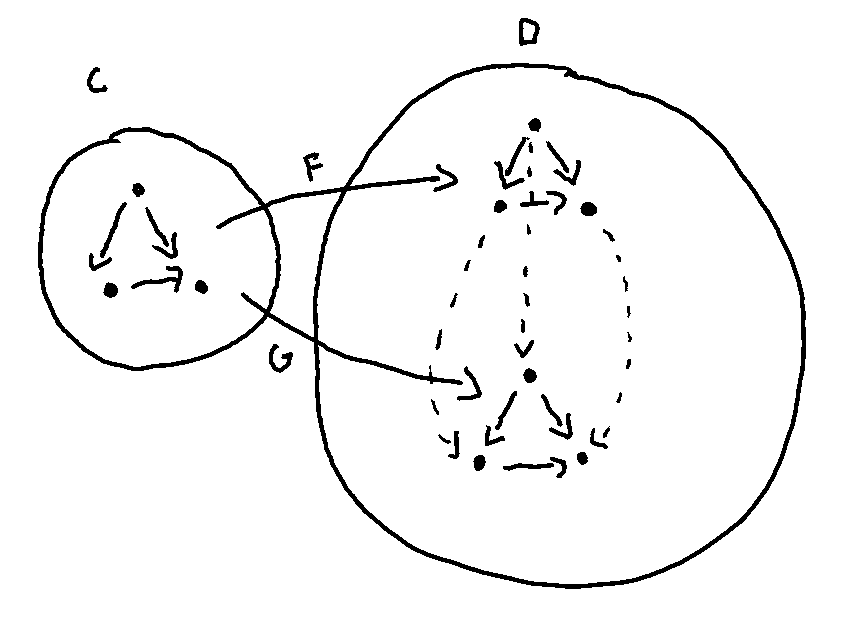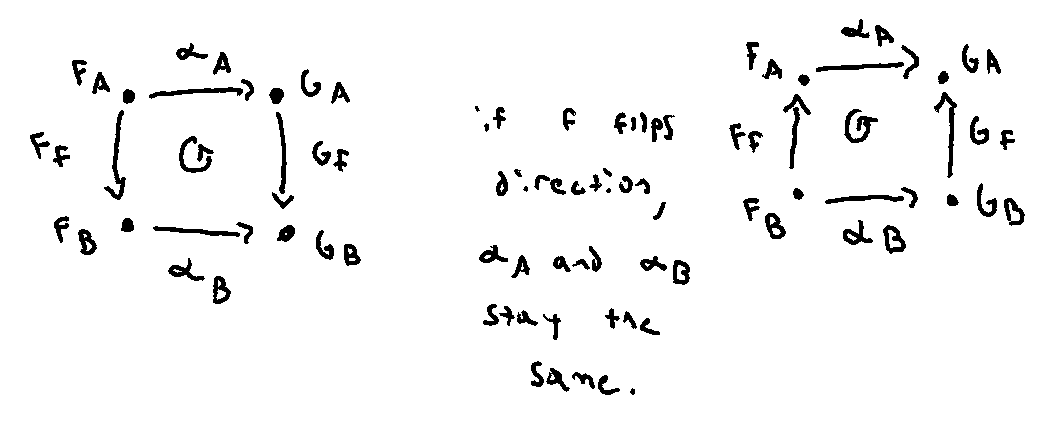What makes natural transformations, natural?
19 Oct 2019 ⇐ Notes archive(This is an entry in my technical notebook. There will likely be typos, mistakes, or wider logical leaps — the intent here is to “let others look over my shoulder while I figure things out.”)
Learning category theory often involves patiently sitting with a concept until it—eventually—clicks and then considering it as a building block for the next1.
Grokking natural transformations went that way for me.
I still remember the team lunch last spring where I couldn’t keep my excitement for the abstraction a secret and had to share with everyone (I’m a blast at parties).
After mentioning the often-cited example of a natural transformation in engineering, Collection.first (a transformation between the Collection and Optional functors), a teammate asked me the question heading this note:
What makes a natural transformation, natural?
I found an interpretation of the word.
Say we have some categories C and D and functors F and G between them, diagrammed below:

If we wanted to move from the image of F acting on C to the image of G, we have to find a way of moving between objects in the same category.
The question, rephrased, becomes what connects objects in a category? Well, morphisms!
Now, how do we pick them? Another condition on natural transformations is that the square formed by mapping two objects, A and B connected by a morphism f, across two functors F and G must commute.
Let’s call our choices of morphisms between F_A and G_A and F_B and G_B, α_A and α_B, respectively.

Even if f flips directions across F and G—i.e. they’re contravariant functors—our choice in α_A and α_B is fixed!
The definition, the choice of morphisms, seems to naturally follow from structure at hand. It doesn’t depend on arbitrary choices.
Tangentially, a definition shaking out from some structure reminds me of how the Curry–Howard correspondence causes certain functions to have a unique implementation. Brandon covered this topic in a past Brooklyn Swift presentation (timestamped).
For more resources on natural transformations:
- What is a Natural Transformation? Definition and Examples
- What is a Natural Transformation? Definition and Examples, Part 2
- Bartosz’s 1.9.1 lecture on the topic.
-
Then, repeating further. One day, I hope to have built the machinery needed to read Riehl’s research and writing on ∞-category theory. ↩